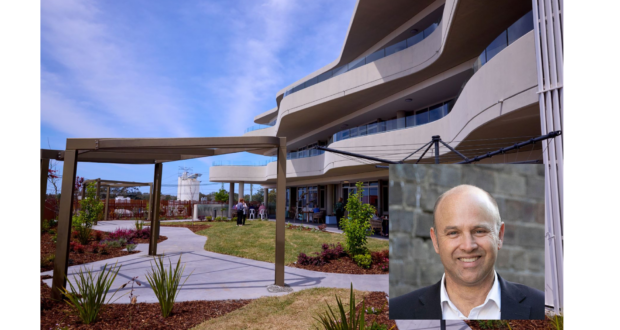Draft National Aged Care Design and Principles are being written and trialled to meet recommendations proposed by the Aged Care Royal Commission.
The report states that previously, aged care has focused too much on 'care delivery', and not enough on the 'experience of living in the home'.
Aged Care Insite spoke to the director of aged care home designer Constructive Dialogue Architects Nicholas Seeman, who is member of the Principles and Guidelines committee.
The architect said all the principles all point to lowering the amount of information residents have to process in their living spaces.
“The whole reason why we did the four principles was we wanted them to be simple, memorable ideas,” he said.
“Once you look for it, they're obvious, but if we're not in that mindset, people traditionally will preference what they think is good style as opposed to a functional environment.
“When we're looking at design in aged care, it's not about chandeliers or fancy appearances, it's really about some quite pragmatic things.”
Mr Seeman explained the first principle, ‘enabling the person’, is about cognitive load, being the amount of information residents are trying to process.
That load can be an issue if it is too high; especially for those who have dementia or face other sensory challenges.
The designer said there needs to be opportunity for residents to escape public, noisy places.
“If the environment is noisy or busy, or the patterns on the floor are confusing, there's too much information for people to process, and that actually is disabling,” he said.
“People might have an impairment, like a sight, hearing or mobility impairment. The building itself, or [an unsupportive] environment, is what turns an impairment into a disability.”
He said the second principle, ‘cultivate a home’, is about small scale households which also contribute to lowering the disorienting nature of busy environments.
“If a building is institutional, if ‘clinical’ dominates, if people are having meals as part of a group of 40 people at a time, that is problematic,” he said.
“All the research says small scale domestic households of 15 people or less are a really key part to a good design and lifestyle outcome for residents.”
Mr Seeman said the third principle, ‘access the outdoors’, and fourth, ‘connect with community’, are connected, and require home design to change so residents don't have as may issues getting into gardens or onto balconies.
Overall, designs need to have residents and their needs put first and foremost, rather than focusing on style and look, to achieve the best outcomes for those in the home.
Cost and care time are important factors for the aged care industry, who is having issues meeting staffing demands.
But, Mr Seeman said there's very little in the principles that should make a new build more expensive, and changes should be "business as usual."
“Most aged care facilities, through their ‘life’, go through replacing floors, repainting corridors and doing interior work,” he said.
“Most of the interior upgrades are easy wins because [providers] are spending money anyway through the life of a building.
“All of the ideas that we put into that first principle are actually things we're saying should just be part of standard design and standard maintenance work.
“We’re architects, that's what we do. Professionally we work with providers who want to turn large institutional buildings into things which are smaller households, that's just the stuff we do.”
He said the government is currently having discussions about the funding required to implement the Principles and Guidelines, but some providers have already begun upgrading their homes to meet the guidelines under current funding.
However, chief of Whiddon aged care homes Chris Mamarelis said the government needs to recognise that investment would be required to meet the guidelines.
"While providing these guidelines is a valuable next step for the industry, they must go hand in hand with funding reform if we want to reignite investment and meet the needs of our communities into the future," he said.
"This is underpinned by current data, that indicates we are seeing more home closures and less investment and redevelopment, while demand continues to grow."
The final guidelines will be published in November 2023, and should be implemented in July 2024.
Do you have an idea for a story?Email [email protected]
 Aged Care Insite Australia's number one aged care news source
Aged Care Insite Australia's number one aged care news source


One comment
Pingback: The thought behind the aged care home design guidelines - Aged Care INsite - DSD Design